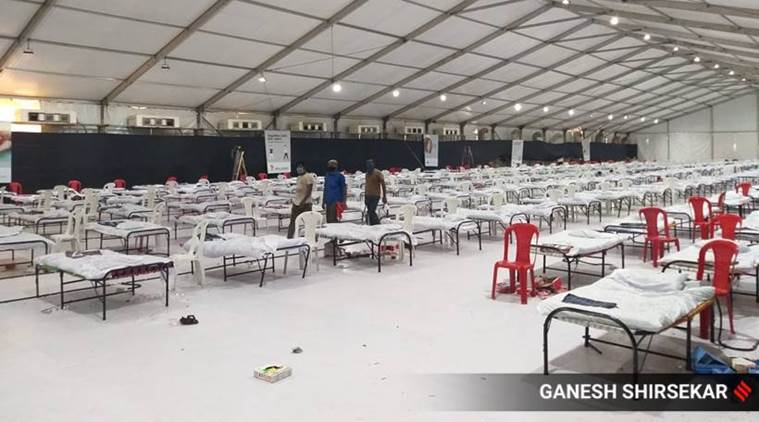 The national lockdown began on March 25. These invocations were meant to facilitate and galvanise disaster preparedness to meet the unparalleled health crisis. (File Photo)
The national lockdown began on March 25. These invocations were meant to facilitate and galvanise disaster preparedness to meet the unparalleled health crisis. (File Photo)
On January 30, India had its first COVID-19 patient, the same day the World Health Organisation (WHO) declared the outbreak as a public health emergency of international concern. On March 11, when the WHO declared it a pandemic, the government of India invoked the Disaster Management Act (2005), and the Epidemic Diseases Act (1897). The national lockdown began on March 25. These invocations were meant to facilitate and galvanise disaster preparedness to meet the unparalleled health crisis.
After Prime Minister Narendra Modi’s war cry against the pandemic, citizens must have felt relieved and secure when the health ministry briefed the media on April 12 that nation is over-prepared in terms of testing, training and hospitalisation to stay ahead of the disease curve. It stated, “As of today, if we need 1,671 beds for COVID-19 patients, we have over 1 lakh 5 thousand beds available”. Even though the figure looked impressive, on the ground, the beds were scattered and not located as per the hospitals’ requirement at a given point in time. Thus, when there is no coordination, cooperation and collaboration among hospitals in a geographical region, the problem of shortage of beds gets acutely exacerbated and becomes unmanageable even with a slight increase in the number of patients. A hospital that is full may deny admission, whereas beds may be available in another hospital. But for a patient, it is too burdensome to locate hospitals with vacant beds. This has caused tremendous hardship to many patients, resulting in delayed treatment and even deaths.
On June 5, Neelam, who was eight-months pregnant, was refused admission by eight hospitals in 12 hours and died in an ambulance in Noida. A probe ordered by the district magistrate found that she had to shuffle between hospitals without a proper referral, and Noida hospitals made excuses to deny her admission. Many such tragic stories have been reported from different parts of the country. Meanwhile, high courts and the Supreme Court took note of the difficulties people were facing in accessing medical care and passed scathing remarks on the governments’ handling of the situation. The Court reminded the custodians of public health services that they are duty-bound to provide care. The government, aware of its inadequacies, tried to rope in private hospitals so as to cover as much ground as possible from testing to hospital beds for serious COVID patients. The delayed corrective measures, more than four months after the first COVID case, reflect misjudgement of an evolving, calamitous pandemic.
In 1992, there was no disaster, no epidemic and no pandemic. Hakim Seikh, a farm labourer, fell from a train at Mathurapur station in West Bengal at around 7.45 pm on July 8, and sustained a head injury. He was given first-aid in the primary health centre at Mathurapur and referred to a higher centre for further treatment. Unfortunately, he was denied admission due to the lack of a bed in four government medical colleges, and two private hospitals. He finally got admission in the Calcutta Medical Research Institute the next day and was treated there. This case, Paschim Banga Khet Mazdoor Samity vs State of West Bengal and Anr, was adjudicated by the Supreme Court in 1996. The Union of India was also made a party to the case. Considering the range of implications, the apex court observed that other states, though not parties, must take necessary steps in light of the directions passed.
The SC ruled that denial of emergency treatment is a violation of the right to life guaranteed under Article 21 of the Constitution. The order laid out comprehensive guidelines for proper documentation and protocols for referral/transfer of patients. If a patient is too sick to be transferred, he/she is to be kept on a trolley and even on the floor till she/he can be accommodated. To ease the pressure for emergency beds, the SC recommended that “a Central Bed Bureau should be set up which should be equipped with wireless or other communication facilities to find out where a particular emergency patient can be accommodated when a particular hospital finds itself absolutely helpless to admit a patient because of physical limitations. In such cases, the hospital concerned should contact immediately the Central Bed Bureau which will communicate with the other hospitals and decide in which hospital an emergency moribund/serious patient is to be admitted.” The Delhi government’s “Corona App” is a good initiative to locate vacant beds, but is yet to prove effective. Nonetheless, all the beds available with every hospital in a geographical region need to be pooled for equitable distribution in the best interests of the patients.
Were these SC recommendations taken seriously and followed anywhere in India in the last 27 years? Instead, the states are busy reinventing the wheel amid the pandemic. The neglect of emergency health services for decades is taking a toll. Hakim Seikh was lucky to survive. But there may be no such luck for many of the seriously ill patients, with COVID or otherwise.
The writer is professor of emergency medicine (surgery), department of emergency medicine, All India Institute of Medical Sciences, New Delhi. Views are personal